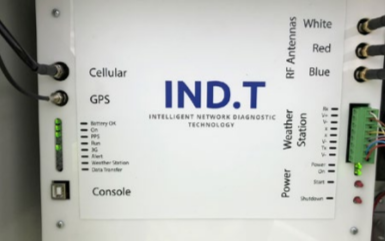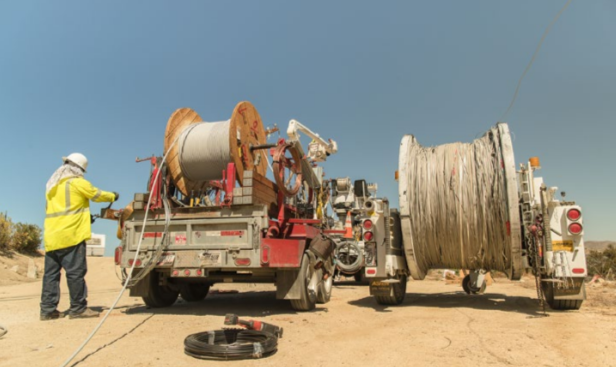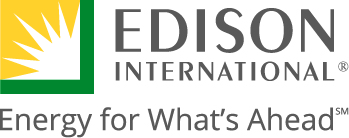Edison International 2021 Sustainability Report: Climate Adaptation
Edison International 2021 Sustainability Report
Our approach to addressing climate change focuses on adaptation in addition to mitigation. As we have experienced firsthand in California, the effects of climate change have become undeniable. Both the public and private sectors must plan to adapt to the challenges climate change brings. With a focus on vulnerable communities, SCE is working to coordinate medium- and long-term actions and associated investments across sectors to optimize the societal benefits of adaptation planning. In the near term, we continue to adapt our system to the threat of climate change-driven wildfires.
Long-Term Assessment
In May 2022, SCE made public a climate adaptation vulnerability assessment (CAVA), which evaluates the potential long-term impacts of temperature, precipitation, sea level rise and wildfire hazards on our infrastructure and operations. The assessment uses 10 California-endorsed Global Climate Models as the best representation of climatic patterns and a conservative, high-emissions global warming scenario to ground this assessment. We also engaged with the community to inform the assessment, with a particular focus on our stakeholders in disadvantaged vulnerable communities (DVCs).1
Edison International's Adapting for Tomorrow: Powering a Resilient Future summarizes key takeaways including the types of vulnerabilities SCE, our customers and our communities could face. Findings include the need for climate adaptation investments over the next three decades, starting with no-regrets foundational measures now; the incorporation of future climate states into planning processes; a common level of understanding of climate change risks among communities and stakeholders; and significant collaboration between private and public sector stakeholders to perform cross-sector resiliency planning.
To support the CAVA, in 2021, SCE launched our Climate Resilience Leadership Group, a forum of community leaders working with SCE on a six-month engagement to collect local feedback from DVCs. The feedback helped SCE identify gaps in our thinking about local community resilience, and we included these insights the CAVA. For example, qualitative feedback collected from these engagements helped SCE adjust and improve quantitative metrics developed to assess how modifying our grid to address climate change impacts would impact surrounding communities. See Environmental & Social Justice: Additional Details for more information.
Near-Term Actions
In the near-term, SCE continues to adapt our system to the threat of climate change-driven wildfires. In total, approximately 2.5 million acres burned in California in 2021 — fewer acres than in 2020 but on par with 2019, a previously record-breaking year. In October 2021, a drought emergency was declared across California. Increasing temperatures and heightened drought conditions make areas much more vulnerable to wildfire, especially in high fire risk areas (HFRA), which comprise approximately 27% of SCE’s service area.
SCE continues to harden the electric grid to ensure safety, grid resiliency and system readiness for these growing climate change impacts. We met or exceeded nearly all of our wildfire mitigation goals in 2021. We installed more than 1,500 circuit miles of covered conductor, bringing the total to more than 2,900 circuit miles that covers approximately 30% of our overhead distribution lines in HFRA.
Due to our wildfire mitigation efforts, we estimate that customers on the most frequently impacted circuits experienced 70% less public safety power shutoff (PSPS) outage time than they would have if the work had not been performed, based on 2021 weather and fuel conditions. Working with the modeling firm Risk Management Solutions, SCE estimates that as of year-end 2021 our wildfire mitigation efforts have reduced the probability of losses from catastrophic wildfire linked to SCE equipment by 65% to 70% since 2018, which shows improvement from a June 2021 estimate of 55% to 65%. Moreover, the PSPS contribution to total risk reduction declined from 40% to 30% between June 2021 and yearend, reflecting SCE's decreased dependency on PSPS as a mitigation measure.
SCE also continued to strengthen partnerships with state fire agencies, as well as academia and peer utilities, to advance wildfire defenses. In 2021, we supported the debut of the most effective water- and retardant-dropping helitankers in the world and the formation of the first-of-its-kind, quick-reaction aerial firefighting force. SCE contributed $18 million to Orange County Fire Authority (OCFA), Los Angeles Fire Department and Ventura County Fire Department for the lease of firefighting equipment, after successful partnerships with OCFA in 2019 and 2020. SCE also continued to collaborate with the International Wildfire Risk Mitigation Consortium, a group formed in 2020 between California investor-owned utilities and Australian utilities, to create a framework for utilities worldwide to jointly combat the global wildfire threat.
SCE is a key funder and technical lead to the newly created Cal Poly San Luis Obispo’s Wildland-Urban Interface Fire Information, Research and Education Institute. The institute, which is the first of its kind at a California university, is looking for holistic solutions to mitigate the consequences of wildland urban interface fires. Land where housing, commercial development and wildland areas meet is known as wildland urban interface. Fires in the wildland urban interface are the most frequent source of declared disasters in California and are becoming increasingly more frequent and damaging because of climate change and increased demand for housing in these areas.
View the full 2021 Sustainability Report here.
1 Defined by the CPUC (D. 20-08-046, p. 119) as communities in the 25% highest scoring census tracts according to the most recent version of the California Communities Environmental Health Screening Tool (CalEnviroScreen), as well as all California tribal lands, census tracts with median household incomes less than 60% of state median income and census tracts that score in the highest 5% of Pollution Burden within CalEnviroScreen, but do not receive an overall CalEnviroScreen score due to unreliable public health and socioeconomic data.



